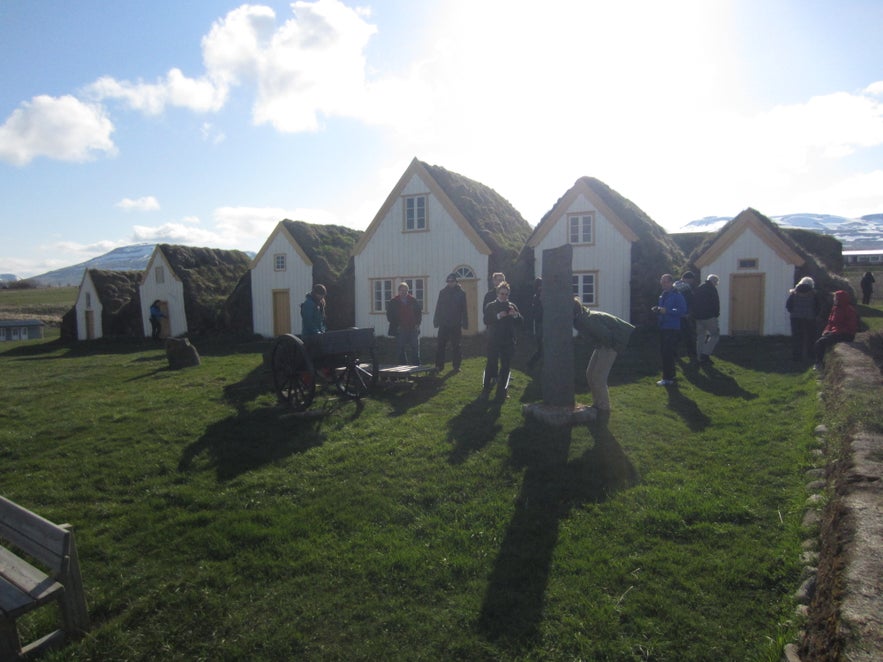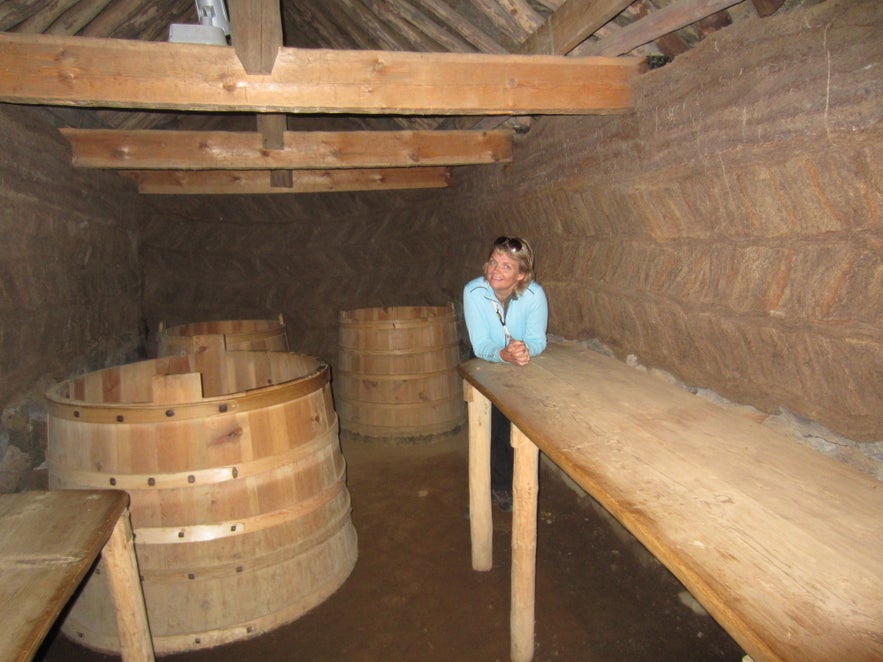
Icelandic turf houses

I am a huge fan of old traditions in Iceland and have often wondered and admired how our ancestors lived all these long periods of dark ages, with eruptions and cold weather. Through the centuries the history of building houses in Iceland deals mainly with various types of turf farmhouse.
Before concrete took over around 1900, turf, stone and wood were the main construction materials used here. The timber was either driftwood or imported wood. Houses built from these materials are rather short-lived so that there are not many examples left.
With the aid of literary sources and most important, through archaeological research, scientists have managed to create a good overview over the development of the turf-house.
In many countries, old castles, churches and forts are among the favourite tourist sites. We don't have any of those here in Iceland. The oldest houses in Reykjavík date from the 18th century, but elsewhere in the country there are some houses that are much older, like for instance parts of the buildings at Keldur in South-Iceland, from the 13th century.
The development can be divided into three main periods: first the period of the long-house, or skáli, then the passage-house, and finally the period of the gabled house. The first settlers brought with them the building tradition from their homeland, which in most cases was the west coast of Norway.
Long-house were typical to this first period can be described as a large, oblong house, rather narrow. Lack of firewood and timber is probably the main reason why the passage-house made of turf gradually took over from the long-house. This sort of house was a complex of several small houses that were joined together by one passage. Each room had its function.
Gabled houses appeared towards the end of the 18th century. They became quite popular, mainly on aesthetic grounds. Main difference between these and their predecessor’s lies in the wooden front gables that give the farms a statelier look. The roofs had to be rather steep so that rainwater would drain easily.
The museum farm, Glaumbær in North-Iceland is a good example of such a house. There, storehouses and two guest-rooms are at the front, but the main complex of rooms is still at the back, where it’s warmer. Many of the turf-farmhouses that have been preserved have been turned into folk-museums. Whoever wants to learn about housing and the way people lived in the old days here in Iceland should visit one of these museums.
Only 75 km from Egils Guesthouse is the Museum at Árbær in Reykjavík. Very interesting museum if one wants to study the various types of old houses we have in Iceland.
기타 흥미로운 블로그
요쿨살론부터 비크까지, 꽃보다 청춘 5화
드디어 하늘씨과 쓰리스톤즈가 합류했는데요! 설원을 달리는 모습에 저도 아이슬란드가 엄청 그리워졌답니다. 빙하와 빛나는 요쿨살론 첫번째로 향한 요쿨살론(Jokulsarlon)은 아이슬란드의 대표적인 명소 중 하나랍니다. 영어로 Glacier lagoon 이라고도 하는데요. 방송에 나온 것처럼 눈 앞에 보이는 빙하는 빙하수가 흘러서 녹았다 얼었다를더 보기스코가포스 폭포부터 오로라까지, 꽃보다청춘 4화를 따라서
여행 5일째, 포스톤즈가 처음으로 향한 곳은 아이슬란드 남부에 있는 스코가포스 폭포(skogasfoss)입니다. 아이슬란드 남부의 대표적인 폭포 중 하나에요. 방송에서는 들르지 않았지만 스코가포스 거의 바로 옆에 위치한 셀리야란드스포스(seljalandsfoss) 폭포와 함께 같이 들르곤 한답니다. 스코가포스 폭포는 폭포의 물줄기 끝까지 올라갈 수 있단더 보기꽃청춘을 따라서
요즘 인기리에 방영되고 있는 꽃보다 청춘 아이슬란드편! 저도 매주 빼놓지 않고 시청하고 있습니다. 많은 분들께서 포스톤즈의 발랄한 매력과 아이슬란드의 놀라운 경치에 빠져드셨을 것 같습니다! 이번에는 꽃보다 청춘을 따라서 아이슬란드를 한번 가보도록 해요! 사실 아이슬란드가 한국에서 그렇게 가기 쉬운 나라는 아닙니다. 거리도 멀고 항공권도 비싸고! 우더 보기

아이슬란드 최대의 여행 마켓플레이스를 전화에 다운로드하여 전체 여행을 한 곳에서 관리하세요
전화 카메라로 이 QR 코드를 스캔하고 표시되는 링크를 누르면 아이슬란드 최대의 여행 마켓플레이스를 주머니에 넣을 수 있답니다. 다운로드 링크가 포함된 SMS 또는 이메일을 받으려면 전화번호 또는 이메일 주소를 추가하세요.

















